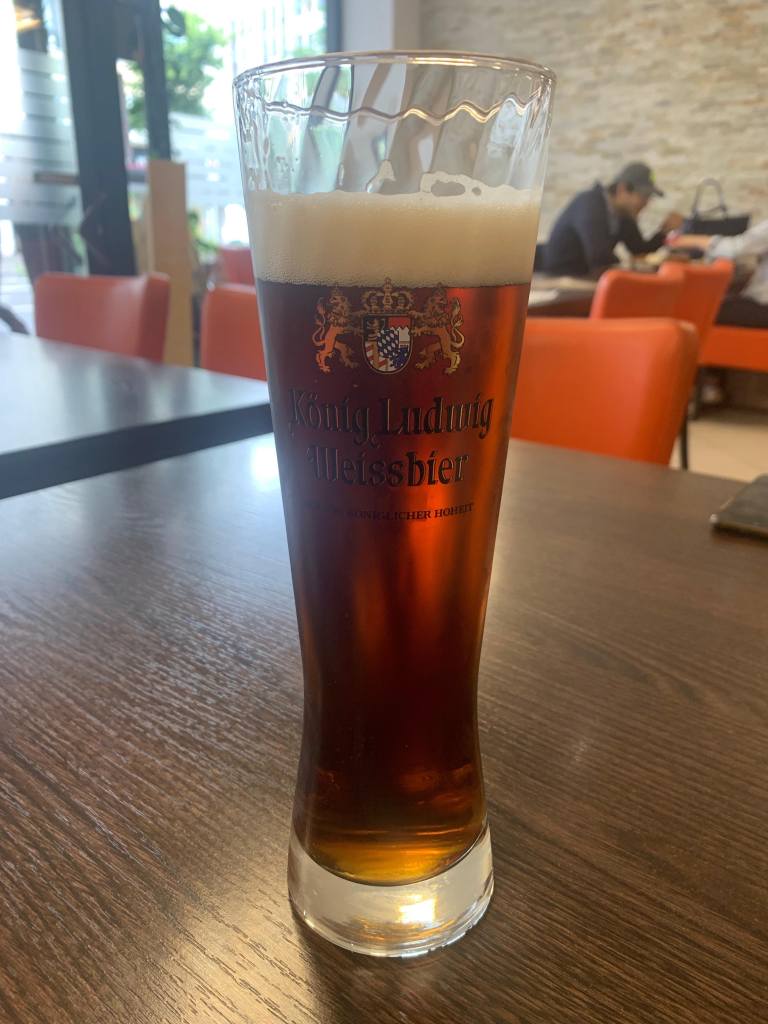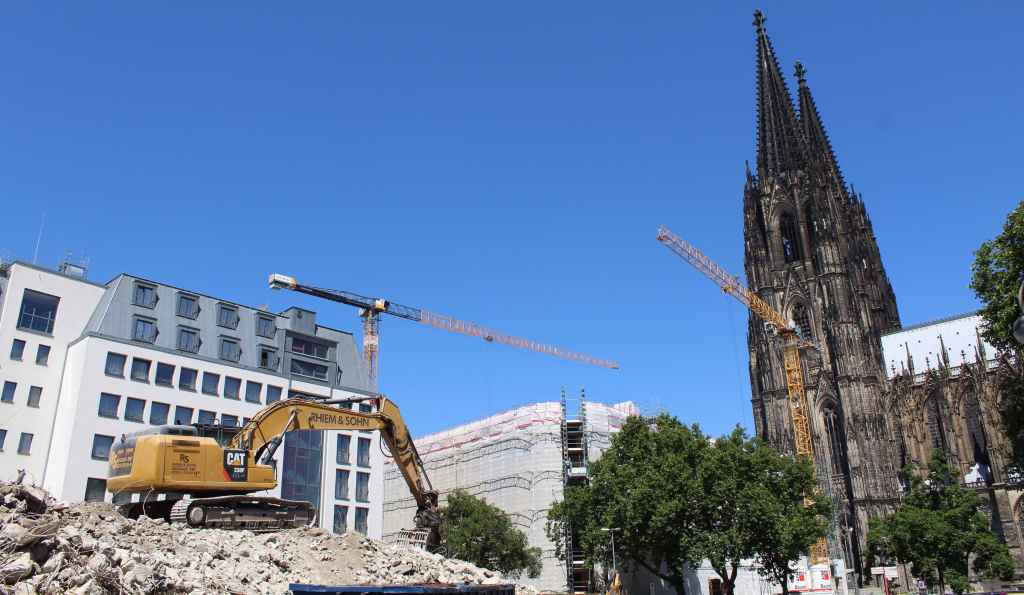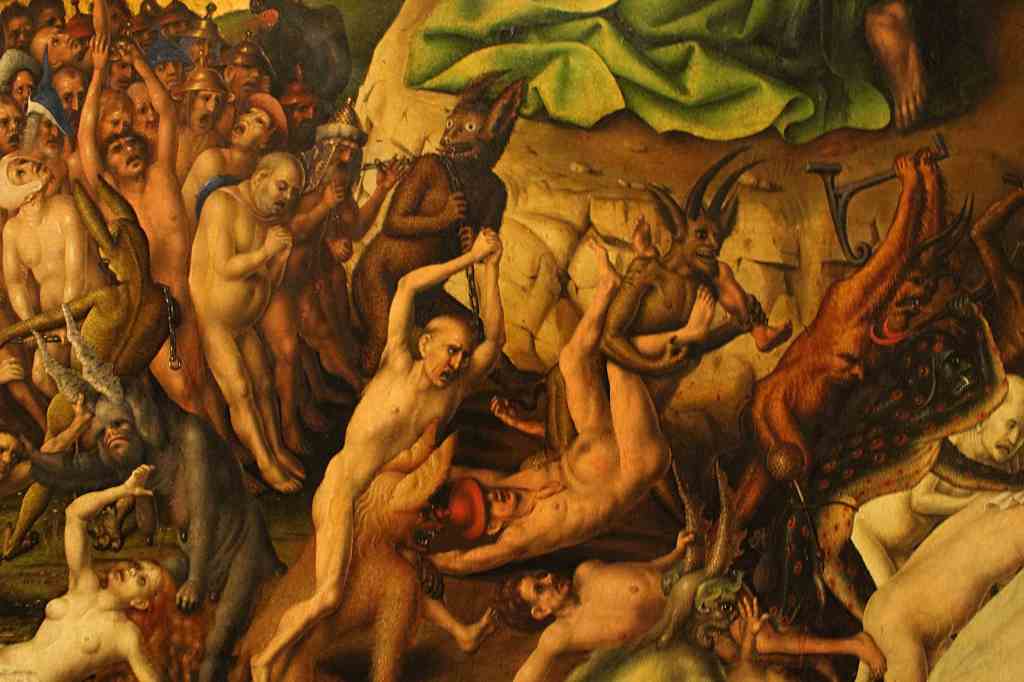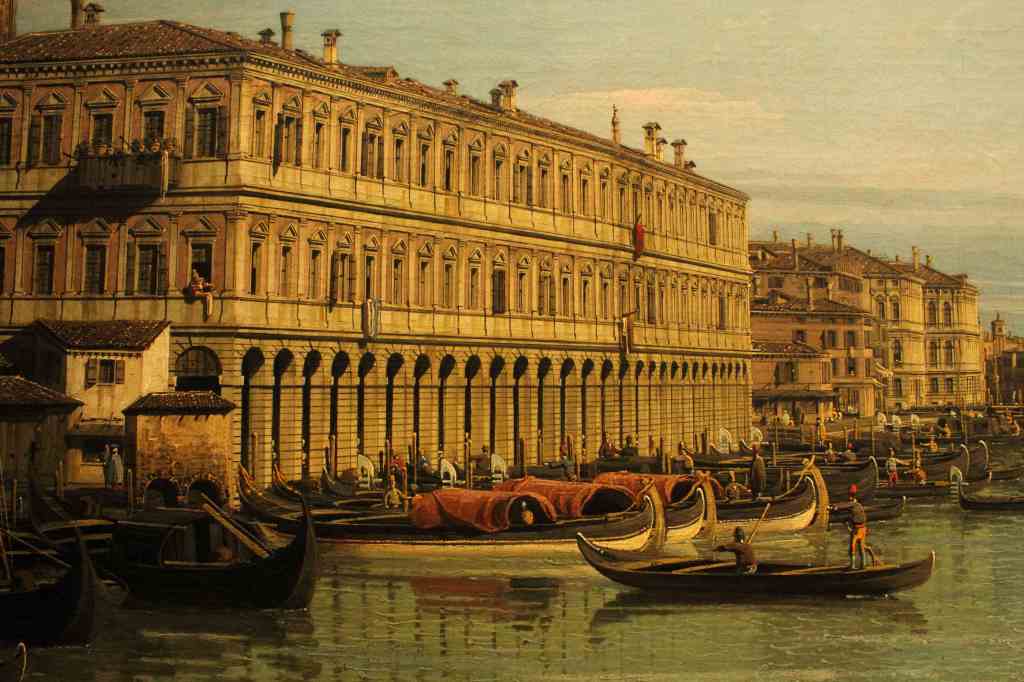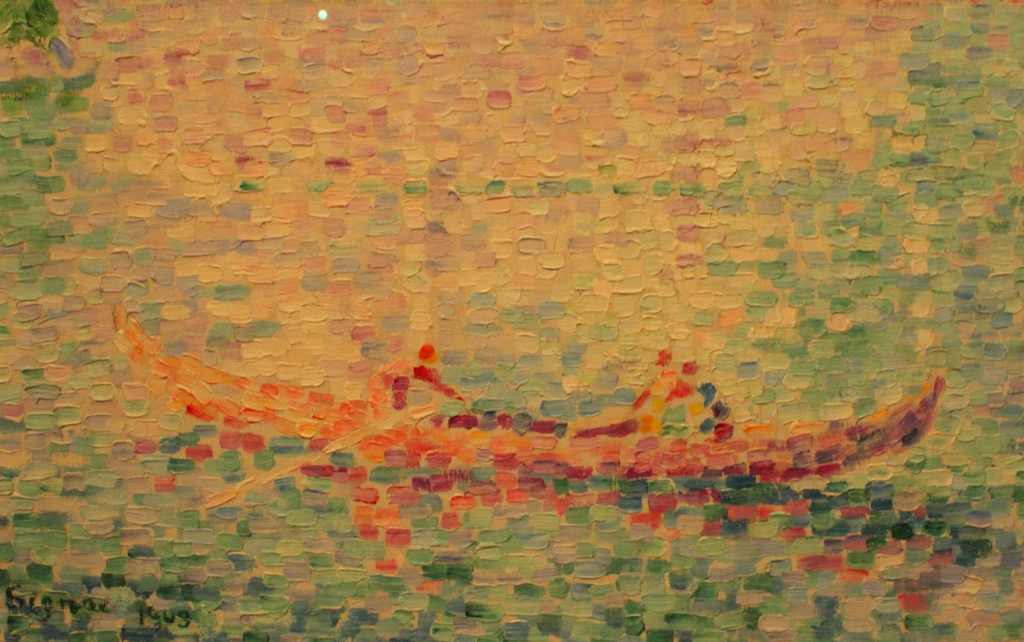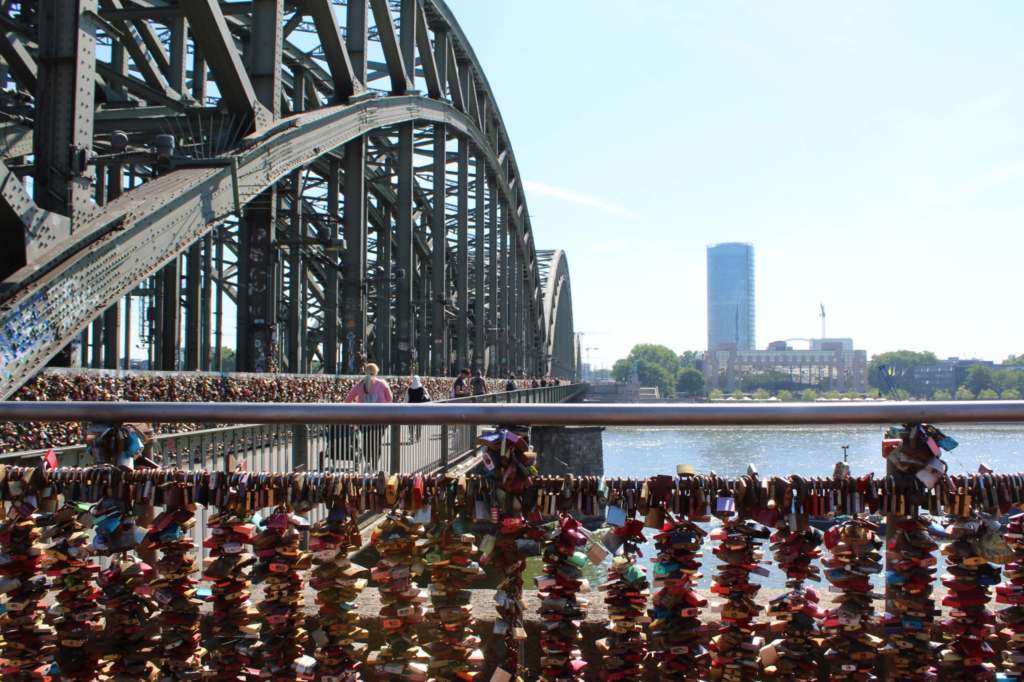There is probably no landscape so evocative of Germany as the Middle Rhine. It is as if everything from the water to the trees were composed by Richard Wagner. With its rolling green hills, the river bustling with barge traffic, the quaint villages and innumerable castles, the whole place is like the fever dream of some 19th century romantic poet. This is what I was here to explore.
I had traveled from Düsseldorf that morning (nearly a two-hour trip) and arrived in Koblenz—the largest city in this section of the Rhine—by noon. There, I dropped my big backpack in a storage locker and then immediately hopped on another train.
In just another 15 minutes, I was in Braubach, a sleepy little town on the eastern bank of the river. But I was not here for the village. Instead, I walked straight to the top of the hill that overlooks the town, rushing so as to catch the first possible tour. I was going to visit the Marksburg. (Some people say “Marksburg Castle,” but “burg” already means “castle.”)
Now, the Rhineland has been an important territory since Roman times. Simultaneously a geographic division (near the border with France), as well as a major artery of trade, the river is a key to political and economic dominance. As a result, it is densely packed with castles and fortifications, from those hoping to defend from invasion or extract tolls. Most of these castles have been destroyed in one war or another. The castles standing today are, most of them, reconstructions dating from the 19th century, when the Rhine became an epicenter of the Romantic movement.
But the Marksburg is one of only two castles which was never burned down or blown up (though it was severely damaged by the Americans in 1945—sorry). For that reason, it is one of the jewels of the river.
You can only visit the Marksburg on a tour, and most of these are in German. Yet anglophones need not fear: non-German speakers are given a little information card to read along as the tour guide explains what’s what. I optimistically thought that my German might be good enough to catch at least some of my guide’s explanation (which sounded very engaging), though I quickly had to admit that I was in over my head. Still, it was a fascinating visit.
We began by entering the main gate. Immediately I was given a sense of how difficult it would have been to actually conquer this castle, for we found ourselves in a kind of narrow stone passageway with a wooden platform above us. For any archers—or even for a boy with a heavy rock to throw—we would have been sitting ducks. On the wall were the coats of arms of all of the noble families who once controlled this castle. At the top there was a battery of cannons pointed out towards the Rhine. Looking out, I could see that any ships on the river below would be in much the same position as a soldier storming through the gate—proverbial fish in barrels.
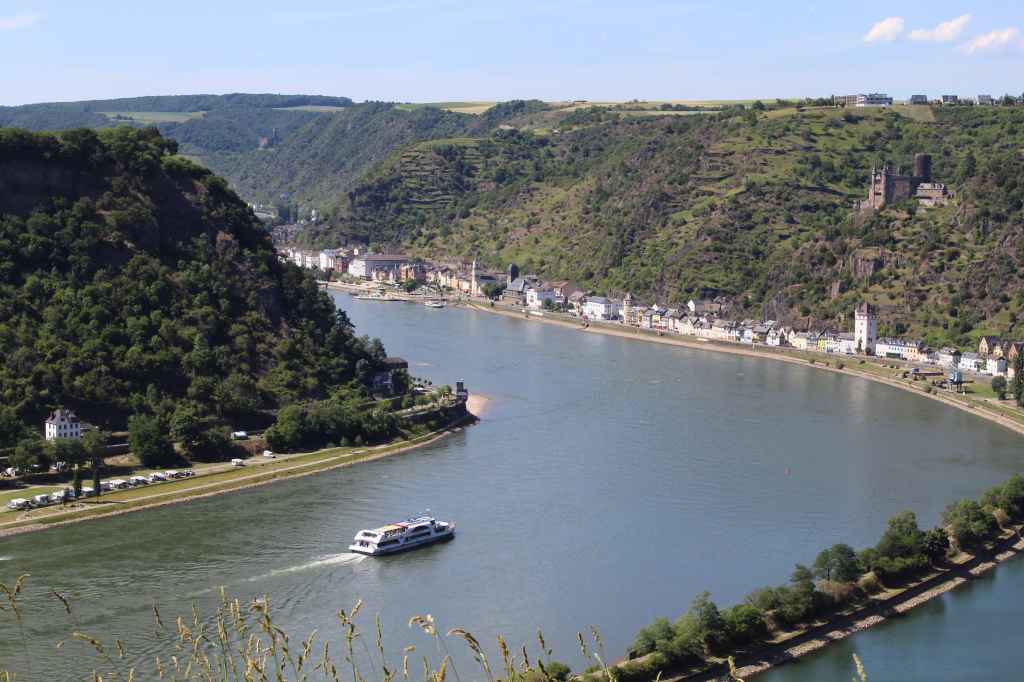
Now, because the castle fell into neglect before its acquisition by the German Castles Association, none of its original furnishings remain. Thus, the interior of the castle is more of a museum than a time-capsule. There is, for example, a room dedicated to the different types of arms and armor used by soldiers throughout history (a bit corny, to be honest), and a garden full of plants important to the medieval herbarium. I particularly liked the kitchen full of period utensils; it put me in the mood for a kingly feast (though I had to settle for currywurst in the castle’s café). But the most beautiful thing to see were the romanesque frescoes on the wall of the chapel.

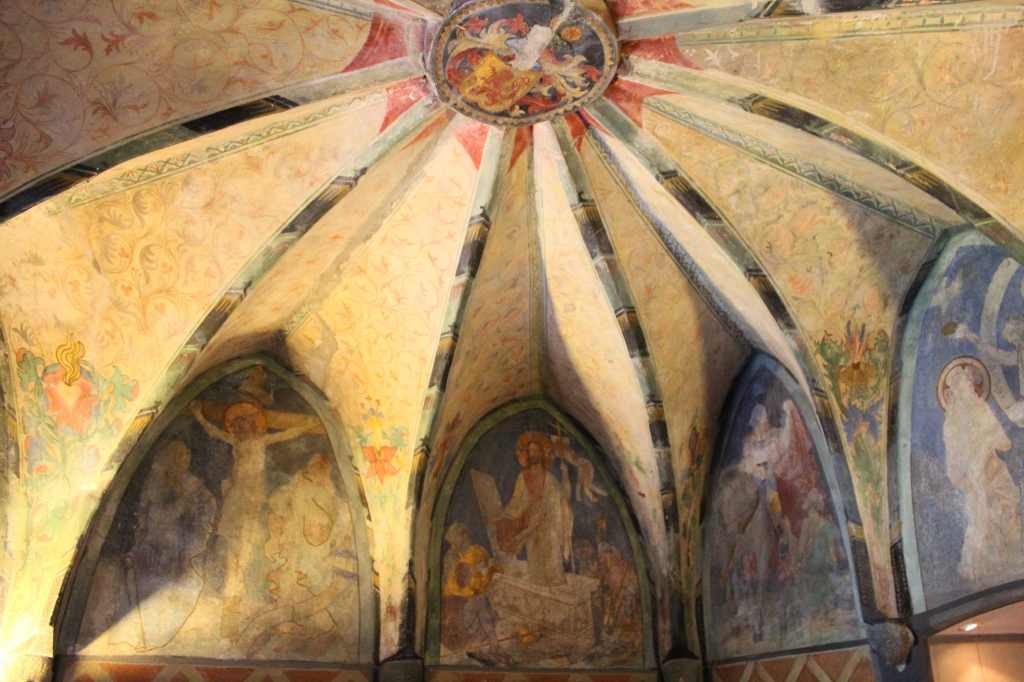
My next stop was a town bearing the attractive name of Sankt Goarshausen. This town is yet another fairly nondescript village on the Rhine. Its main claim to fame is being next to the Lorelei—a huge rocky cliff at a pronounced bend in the river. For centuries, this was a perilous point of navigation for water traffic on the Rhine, and so various legends have grown up to explain the numerous shipwrecks. The most famous of these involves a kind of blond siren who distracts sailors with her beauty. This legend was put into verse by the famed poet Heinrich Heine, whose poem has been set to music by several composers. Here are a few lines:
Die Luft ist kühl, und es dunkelt
Und ruhig fliesst der Rhein
Der Gipfel des Berges funkelt
Im Abendsonnenschein
Die schönste Jungfrau sitzet
Dort oben wunderbar
Ihr Goldenes Geschmied blitzet
Sie kämmt ihr goldenes Haar
In English this goes something like this:
The air is cool, and darkness comes
And quietly flows the Rhine
The mountain peaks are glistening
In the rays of the evening sun
There sits the beautiful maiden
Up there, wondrous
Her golden jewels are shining
She combs her golden hair
You get the idea. Well, beautiful maidens notwithstanding, the Lorelei is indeed a navigational hazard. As recently as 2011, a barge met its demise at this place. And as with seemingly all capsized boats, this one was carrying an environmental hazard—in this case, several thousand tons of sulphuric acid. Sorry, fish.
I was here because I wanted to climb up to the top. The path was short but steep, consisting of one staircase after another. On the way, I passed a sign that told me not to “desecrate this holy place,” as it was meant to “honor German heathens.” Duly warned, I arrived panting and sweaty at the top, where there was a small park with an excellent view of the river. When I caught my breath and got my fill of the scenery, I decided that it was time to return to Sankt Goarshausen. Instead of going straight back down the way I came up, I followed another path on my map that seemed less steep. Soon I found myself in the middle of a field of wheat. I kept going, and soon the Burg Katz (“Cat Castle”) came into view. This is more of a mansion attached to a derelict turret than a proper castle, and in any case is now privately owned and not open to visitors. But it does make for a good photo.
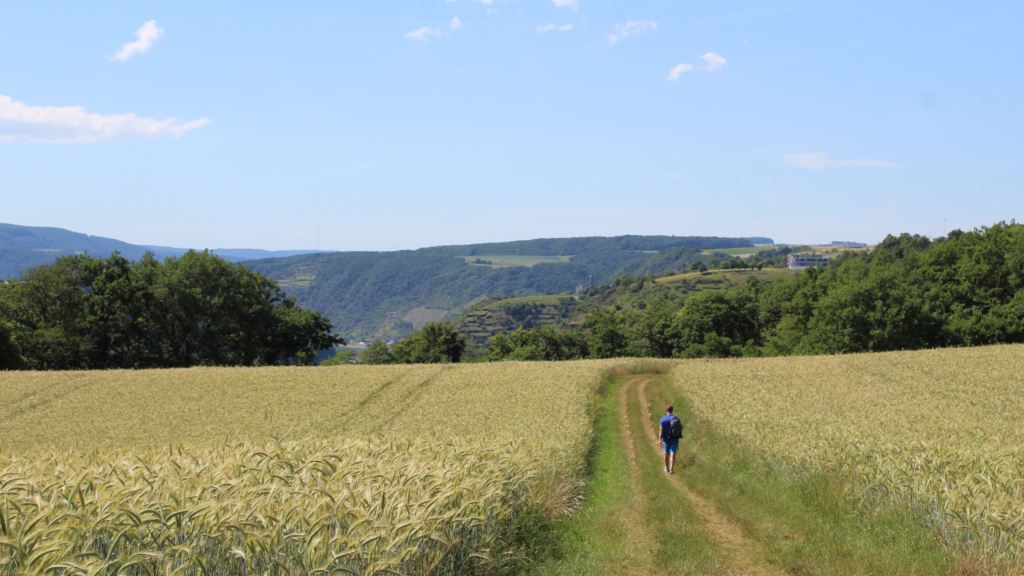

(A bit upriver is the humorously named Burg Maus, or “Mouse Castle,” which was built by the rivals of the Counts of Katzenellenbogen.)
At Sankt Goarshausen I had a beer to cool off and then caught the train back to Koblenz. That was it for my first day on the Rhine. I had been moving nonstop since the early morning, and I needed dinner and a shower. But I still had the next full day to explore.

Early the next morning, the train left me in Sankt Goar. This town is directly opposite where I was the day before, visiting the Lorelei. Indeed, Sankt Goar is the sibling town of Sankt Goarshausen, the two being named after Goar of Aquitaine, who served as bishop in Trier, over 100 km to the west. For many years now, a bridge has been proposed to connect these two estranged sisters (which would be the first bridge to cross the middle Rhine), but it has yet to be built. Instead, a ferry runs back and forth a few times a day.
I was here to see yet another castle, one of the biggest on the Rhine: the Rheinfels. In its prime, the fortress must have been enormous and formidable. Much of the structure was built under the auspices of the awesome Count of Katzenelbogen (“Cat’s Elbows”), of Katz Castle, who wanted to use the two castles to extract tolls from river traffic.

Unfortunately for us, during one of the many wars between the Germans and the French (this one during the French Revolution), invading troops decided to make an example of the iconic castle and ruined it (in technical terms, “slighting”). This was something of a scandal. Although the castle had, in previous conflicts, proven its ability to withstand attacks and sieges by far superior forces, the aging commander Philip Valentin von Resius, upon hearing that a huge French army was approaching, abandoned the castle in great haste. The keep was thus taken without a fight, even though it may very well have withstood the attack. As a result, the French walked right into the abandoned castle, and decided to demonstrate French might. Now only a fraction of the original building remains.

In my enthusiasm to take full advantage of my day on the Rhine, I arrived at the castle gates right as it was opening. I was the first and, for most of my visit, the only visitor in the enormous compound. If memory serves, I was given a little information card that had information about what each section of the castle used to be. But to be honest, I am not particularly interested in castle architecture nor in medieval warfare, and this was of scant interest to me. Instead, I savored the atmosphere of quiet ruin that hung about the place. I walked into one of the intact chambers, in the basement, and whistled—the echo ricocheting like a pinball off the walls. Then, after strolling through the ruins, I sat on a bench overlooking a valley behind the castle. It was a perfect summer day, and I felt that surreal sensation of being absolutely relaxed in a place which you have only ever seen in pictures.
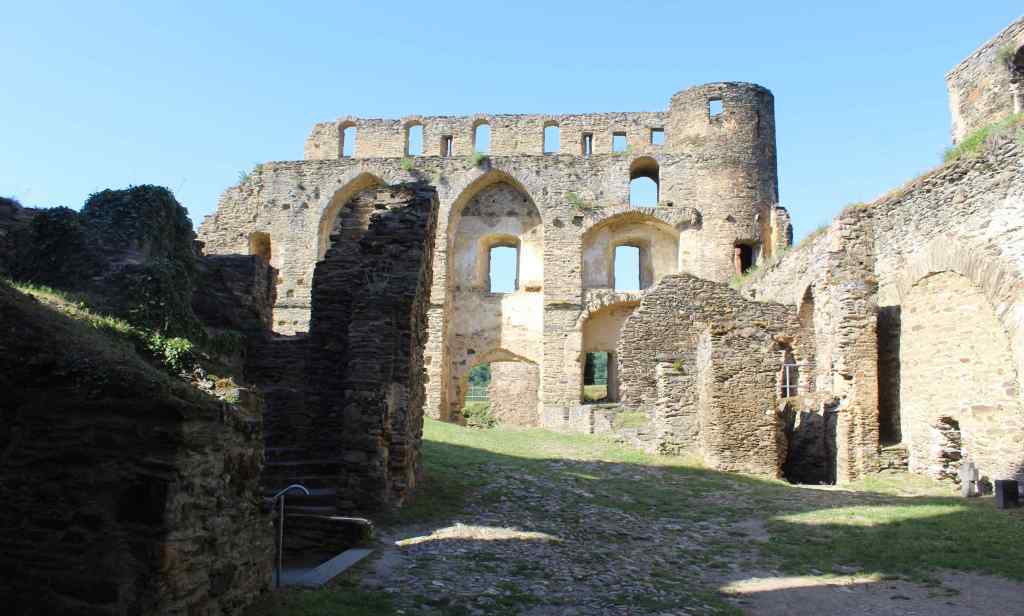
My reverie was broken by a sound. The scream of an airplane engine caught my ear. And although I assumed it would naturally die down, the sound instead quickly increased into an overwhelming roar. For a moment, I panicked. Was a plane about to crash into the castle and incinerate me?
Then the sound suddenly died away. Curious, I ran towards where it had come from, the river, but there was nothing to see. So I asked the man at the ticket booth, who told me that it was an American fighter jet, from a nearby military base. Sometimes they fly low over the valley in training flights. War is still close at hand in the Rhine Valley. (The town was occupied by the French again in World War I, and then taken by American troops in World War II.)
My castle quota reached for the day, I decided to have a little snack. My original idea was to walk into town and have a quick sandwich. Aside from the Rheinfels, there is very little to do or see in Sankt Goar. But its central street is attractive and charming. Though normally I don’t have a sweet tooth, a display of cakes and pastries caught my eye, and I decided to change my plans. Instead of a sandwich, I had a slice of Black Forest Cake (Schwarzwald Küchen). Very satisfying.
My stomach pleased, I walked over to the riverside, where I bought a ticket for the only operating ferry on this part of the Rhine: Köln-Düsseldorfer. I acquired my ticket and noted down the departure times. It was going to leave in just over an hour. This left me with enough time to visit the wine bar across the river from the Lorelei. It was a long walk and I had to rush; but as I knew from my trip to Vienna that Germanic white wine is delicious, I decided that it was worth it. I arrived sweaty and parched, which made the wine especially good but difficult to savor. I wished I had more time, but the ferry was approaching and I couldn’t risk missing my boat.
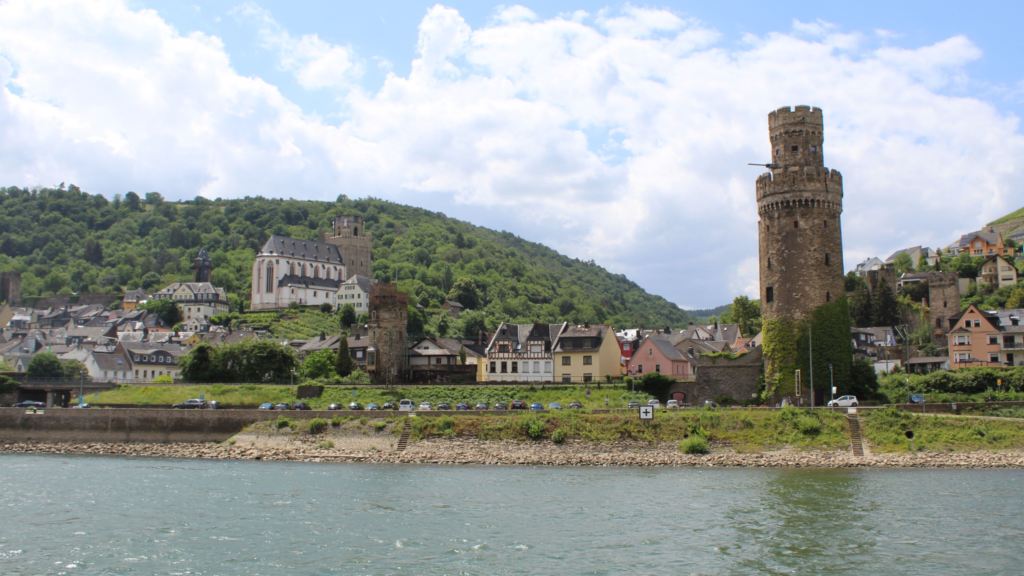
The ferry pulled into the harbor and I climbed up to the top floor, where a bunch of other sunburnt tourists were baking under the sun. The ride was slow and scenic, reminding me of the ferry I had taken the previous month in Lago di Como. Every little town seemed to have its own castle, and much of the remaining land was given over to vineyards. The most impressive sight was the ship-shaped Pfalzgrafenstein Castle, which has been built in the middle of the river. It used to work with the nearby Gutenfels castle to extract tolls from passing ships. Unlike so many other fortifications on this martial river, the Pfalzgrafenstein has never been seriously damaged. However, as it was only a military bastion and never the home of a nobleman, its interior is quite spartan. (You can take a tour from nearby Kaub, but I read that it wasn’t worth it.)

The boat deposited me in Bacharach, one of the most famous villages on the river. The town is full of delightful half-timbered houses—one of them goes all the way back to the 1300s century—giving it a kind of stereotypical German quaintness. Yet as soon as I got off the boat, I decided to walk up into the vineyards on the hill surrounding the river, in order to get a better vantage point. There, I climbed up one of the old watch-towers of the medieval town, the Postenturm, to get a wonderful view of the Rhine valley beyond. After getting my fill of the scenery, I walked up the main road to the Steeger Tor, a gate from the old medieval walls.
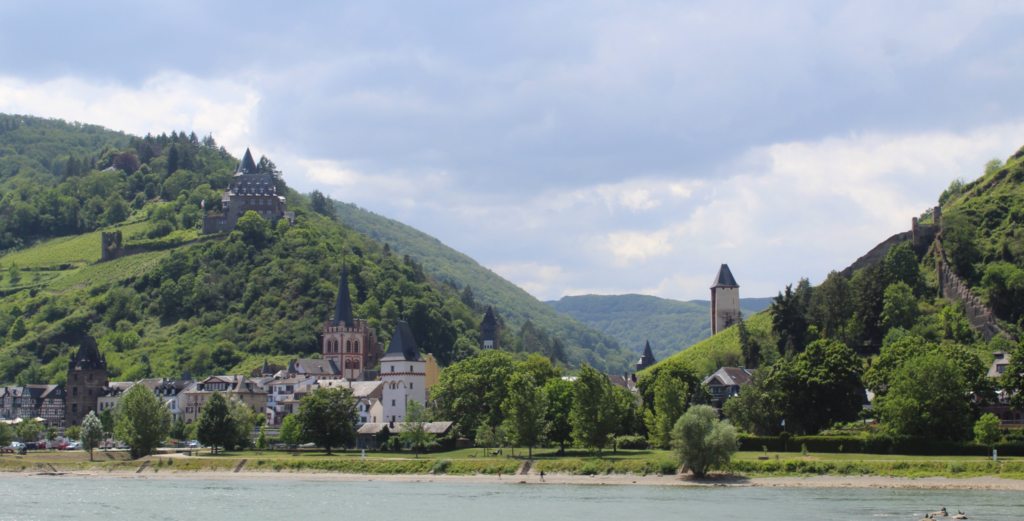
The town of Bacharach is crowned with yet another impressive castle, the Stahleck. I decided not to make the trek up to visit, however, as it is now used as a youth hostel. (In any case, like many of the castles on the Rhine, this one is a reconstruction of a previous castle destroyed in war.) But I did walk up to appreciate the Wernerkapelle. This is a beautiful gothic ruin on a hilltop—a perfect romantic combination of medieval mystery and desolation. Unfortunately, the story of this chapel is not so pleasant. It is named after a young boy who was murdered in the 13th century. The townspeople blamed the local Jewish population (with no evidence, of course), which led to a massacre of 40 people. The past can be very inconveniently ugly.
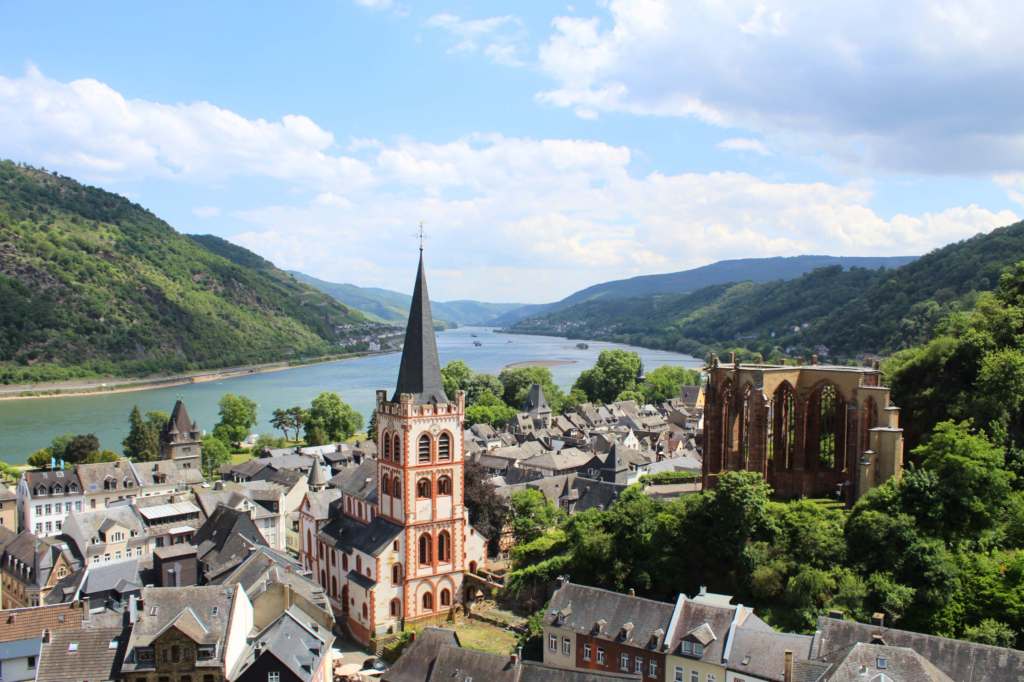
After getting my fill of the sights and views, I decided to kill the time remaining for my return ferry journey by sampling more of the local wine. The typical wines of the region are all white wines, crisp and fresh. Very refreshing. I lapsed into a kind of half-drunk, half-dehydrated reverie.

Finally it was time to return to Koblenz. Luckily for me, the return journey happened to be on the most famous boat on the Rhine, the RMS Goethe. The largest side-paddle steamer in the world, this boat began sailing back in 1913. After being hit by a bomb in the Second World War, it sat for some time on the bottom of the Rhine, until it was finally restored in the 1990s. Nowadays, it is floating nostalgia. I nabbed a seat on one of the side decks and enjoyed a final beer as we crawled up to Sankt Goar. It was the golden hour and the river was especially beautiful. I could see why so many countries and leaders have spent so many centuries fighting over it.
I had loved my time on the Rhine. In many ways, it reminded me of my home in the Hudson Valley—small towns nestled along a picturesque river. Even the verdant landscape was reminiscent of upstate New York. But of course, there are no castles where I’m from (or, at least, no real ones), and our wine is not nearly as good. At least we have better pizza.






